Yves here. Satyajit Das, who has graciously published posts on banking, derivatives, centralized clearing houses, and economic issues, is providing a series on energy needs and the implications of energy transition proposals to NC readers. As he introduces this exposition:
Abundant and cheap power is one of the foundations of modern civilisation and economies. Current changes in energy markets, perhaps the most significant for a long time, have implications for society in the broadest sense. Energy Destinies is a multi-part series examining the role of energy, demand and supply dynamics, the shift to renewables, the transition, its relationship to emissions and possible pathways. The first part looks at the part played by power in the rise of modern societies and patterns of demand and supply over time.
By Satyajit Das, a former banker and author of numerous works on derivatives and several general titles: Traders, Guns & Money: Knowns and Unknowns in the Dazzling World of Derivatives (2006 and 2010), Extreme Money: The Masters of the Universe and the Cult of Risk (2011), A Banquet of Consequences RELOADED (2021) and Fortune’s Fool: Australia’s Choices (2022).
Abundant and cheap power is one of the foundations of modern civilisation and economies. Current changes in energy markets are perhaps the most significant for a long time. It has implications for society in the broadest sense. Energy Destinies is a multi-part series examining the role of energy, demand and supply dynamics, the shift to renewables, the transition, its relationship to emissions and possible pathways. Parts 1, 2, 3, 4 and 5 looked at patterns of demand and supply over time, renewable sources, energy storage, economics of renewables and the energy transition. This part looks at the inter-action between energy policy and emissions.
Since the 1990s, the reduction of greenhouse emissions has been central to energy policy. At the 2015 Paris Climate Summit, participating nations agreed to reach carbon neutrality by the middle of the 21st century to limit global warming to below 2C, preferably 1.5C compared to pre-industrial levels. This requires a rapid transition from fossil fuels to renewables.
The 1.5C target is a politically-driven compromise as even at that level the damage to the environment and bio-diversity is significant.
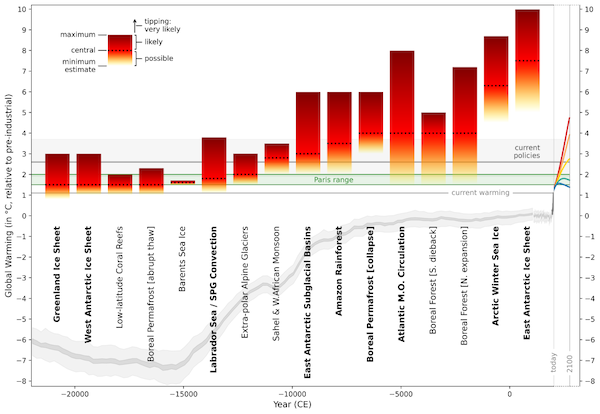
Emissions Targets
Despite serial summits, the reality is that the earth is likely to warm by 1.5C within the next decade with overall temperature exceeding the 2C maximum by the end of the century. Current commitments and policies fall well short of keeping temperatures below the specified levels. The dramatic necessary reduction in global greenhouse gas emissions are most likely unachievable.
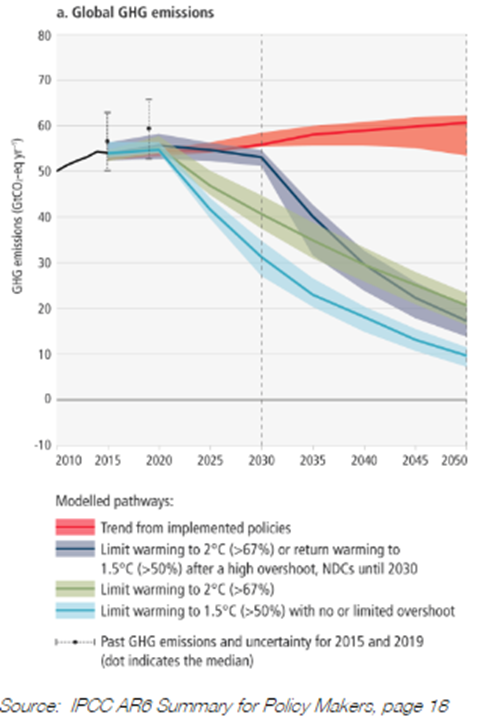
There are multiple reasons for the failure of current policies.
North-South Boundaries
Given the global scope of the issues, emission limits must be adopted by all countries, although compliance by major emitters would allow progress. Even if agreements are reached there is no effective mechanism for enforcement. Accounting is weak, verification is lacking and legal loopholes abound. Actual actions do not match statements. Many countries rely on complex credits and offsets of dubious efficiency (effectively transferring the problem to other countries) to meet their commitments.
There are differences between advanced and emerging economies (frequently simplified as the North-South divide). In the former, there is more political pressure on governments for action on climate change. In the latter, the agreements are viewed as stunting development. Without increase in their energy consumption and emissions, in some cases to a fraction of that enjoyed by the citizenry of richer nations, the ability of poorer nations to improve incomes and living standards is constrained.
The different levels of energy consumption – the average African consumes currently less energy per capita annually than a refrigerator in advanced economies – is one point of contention. A further point of difference is the legacy of energy use by advanced nations since the industrial revolution which had resulted in the build-up of carbon dioxide in the atmosphere.
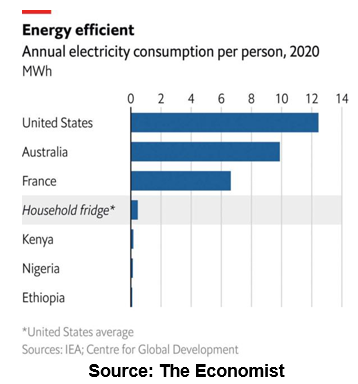
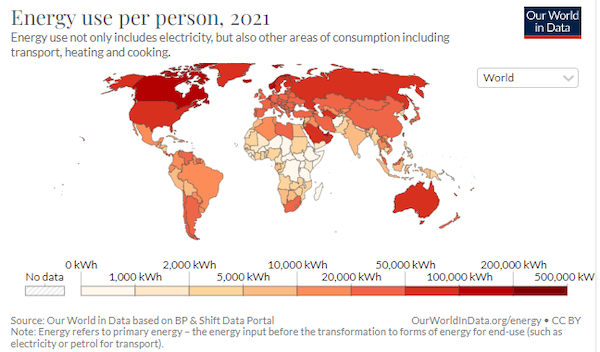
In the last few decades, advanced countries have compounded the problem by shifting high emission industries to developing nations to take advantage of lower costs, laxer environmental and work safety standards, and to reduce their emissions. EV should really be re-branded EEVs – Emissions Elsewhere Vehicles.
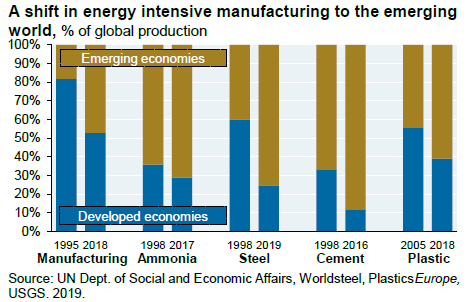
This effectively means that emerging nations will need to cut emissions far more aggressively than their counterparts in developed countries. For example, South Korea, a mid-ranking industrial power, will need to cut reduce emissions by over 5 percent per annum by 2030, while the European Union must cut by around 2 percent and the US and UK by 2.8 percent.
In a speech on 13 October 2022, Joseph Borrell, the European Union’s High Representative for Foreign Affairs and Security Policy, highlighted the perceptual gaps. After pointing out that Federica Mogherini, his predecessor, was looking “younger” and “better”, he outlined Europe’s engagement with developing nations with refreshing candour:
“Europe is a garden. We have built a garden. Everything works…. The rest of the world … is not exactly a garden. Most of the rest of the world is a jungle, and the jungle could invade the garden. The gardeners should take care of it, but they will not protect the garden by building walls. …Because the jungle has a strong growth capacity, and the wall will never be high enough in order to protect the garden. The gardeners have to go to the jungle…. Otherwise, the rest of the world will invade us, by different ways and means.”
After facing mounting criticism, Borrell doubled down arguing that his metaphor had been misinterpreted and there were no racist, cultural, colonial or geographical connotations intended. But the practical corollary to this world view is evident in the European Union relocating heavier industry to and sourcing energy from the ‘jungle’.
The centrepiece of this self-serving policy, vital to achieving European emission targets, is sourcing green hydrogen, solar power (to be transmitted via an ambitious undersea cable) and transition critical materials from North Africa. The benefits to countries like Morocco, Tunisia, Algeria and Egypt are not immediately evident. While providing green energy to the ‘garden’, the ‘jungle’ continues to be heavily reliant on fossil fuels. Some of the water intensive projects are in arid areas. They will destroy delicate desert ecosystems and displace nomadic tribes.
Europe, backed by the UK and the US, now even support Morocco’s claim to the Western Sahara where many of these projects are located despite its sovereignty over the territory not being internationally recognised. It will lead to a militarisation of the disputed area. Western ‘progressive values’ seem not to preclude destroying ‘jungles’ and exploiting its citizens.
In 2023, Raj Kumar Singh, India’s Minister For Power And Renewable Energy, argued that Western subsidies for renewable energy, such as the US Inflation Reduction Act and Europe’s green hydrogen auctions, are undermining clean energy initiatives in emerging economies such as India.
The divisions mean that emerging countries, understandably, will pay lip-service but are unlikely to commit to emission reductions, at least without significant financial compensation. They are likely to increase their energy use, emissions and be less likely to accede to actions which constrain economic development.
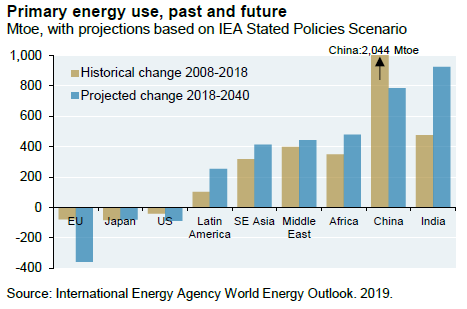
A Costly Affair
The cost of reducing emissions by transforming energy sources is large but so is the expense of climate change and global warming. Unfortunately, there is little agreement on the specifics with substantial differences in estimates.
Deloitte, a consultancy firm, projects that climate change could cost the global economy $178 trillion over the next 50 years. Swiss Re, a re-insurer, projects that climate change could reduce global economic output by 11-14 percent or as much as $23 trillion annually by 2050 with some countries suffering losses of up to one-third of their wealth. Morgan Stanley, an investment bank, estimated $50 trillion needs to be spent on five areas of technology by 2050 to meet the Paris Agreement’s goal of limiting global warming including $14 trillion on renewable power generation and energy storage, $11 trillion on EVs, $2.5 trillion on carbon capture and storage, $5.4 trillion on hydrogen production and storage and $2.7 trillion on bio-fuels. The World Bank puts the cost at 1 percent of global GDP each year (approximately $1 trillion) while the UN estimates it at $1.8 trillion. The International Energy Agency argues that the cost will increase with inaction over time reaching over $20 trillion by 2030. The World Bank estimated that climate inaction could reduce global GDP by at least 5 percent annually while the price of the necessary action is set to 1 percent of global GDP annually.
While the faux precision is reassuring, the underlying assumptions vary. The estimates should be treated with caution, especially given humanity’s poor forecasting record. Many of estimates are the work of self-interested parties who have financial motivations, ranging from consulting contracts, donations, funding as well as investment in beneficiaries of specific actions.
Irrespective of the pretence at accuracy, the costs are substantial and must be paid for ultimately by individuals globally. The problem is that there is little agreement as to who should pay for it and also how it should be funded.
Poor public finances, especially following the pandemic which saw a global fiscal response of over $20 trillion, mean that many countries may not be able to support the cost of the energy transition alongside normal infrastructure and spending needs. The problem is acute in many low-income and less developed countries with high debt levels.
One persistent sticking point has been the transfers from developed nations to emerging countries. Without transfers or subsidised financing from advanced economies, the Bridgetown Agenda for the Reform of the Global Financial Architecture highlights that developing countries are unlikely to be able to finance the energy transition to reduce emissions because of their higher macroeconomic risks.
Under the existing public climate finance plan, developed nations agreed to pay $100 billion each year to developing countries for critical infrastructure for adaptation, resilience and the new renewable energy-based economy. Contributions have persistently failed to reach this level which, in any case, is below the true adaptation costs for developing countries. Estimates of the amount poorer countries will need to spend a year in order to reduce emissions and protect their economies vary wildly, ranging between $140 billion and $300 billion per year by 2030, $280 billion to $500 billion annually by 2050. One forecast puts it at $2.8 trillion. Different assumptions, inclusions and exclusions underlie the variation.
Increasingly, policymakers are hoping that private finance can be mobilise the required capital. Given that issues are largely around public goods, it is not clear what return incentive or government subsidies would be needed.
Effects on living standards is a significant barrier to adopting appropriate policies. It is probable that climate change and the actions to ameliorate its effects will reduce living standards. The losses will be financial (lower real incomes and wealth) as well as lifestyle expectations (denial of access to reliable and almost unlimited energy sources). The quantum and the portions of society and countries most affected is uncertain. Ultimately, no politician relishes seeking re-election on the basis of actions which will leave constituents worse of.
Allied to the issue of living standards is the nature of climate change which is inherently slow acting and long term in nature. Evolution appears to have conditioned humans to react defensively to serious existential threats. Despite claims of rationality, we innately prefer to shut out such anxieties as a form of self-preservation. Comfort is found in denial or accepting simplistic schemes that frequently do not solve unwelcome situations. The underlying logic is one that Helen Keller articulated: “Some people do not like to think. If one thinks, one must reach conclusions; and conclusions are not always pleasant.”
The response is compounded by declining trust in authorities and institutions. It traps people in the prisoner’s dilemma. Lacking confidence in societal processes each person believes that their interests can only be safeguarded by caring about individual not collective fates.
Meaningful attempts at actions which are effective in reducing emissions is difficult and unlikely. The human race now follows Niccolò Machiavelli’s playbook: “how we live is so far removed from how we ought to live, that he who abandons what is done for what ought to be done, will rather learn to bring about his own ruin than his preservation”.
Negative Emissions
Reduction of greenhouse emissions to anywhere near target levels relies on carbon removal. Negative emissions are integral to the Intergovernmental Panel on Climate Change scenarios and the climate agreements based around them especially for countries like China and India.
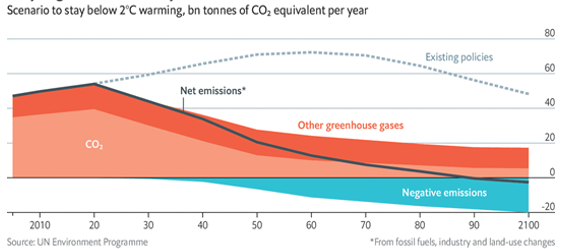
The energy transition will require carbon capture and sequestration (CCS), removing emissions and storing or utilising the carbon dioxide, for several reasons:
- In the short term, it can reduce human greenhouse emissions while renewable energy sources increase their share of the energy mix.
- It can deal with ongoing emissions from hard to de-carbonise sectors, such steel, cement, heavy transportation and aviation, at least until, if ever, affordable, scalable carbon-free technologies become available.
- It could eliminate greenhouse gases other than carbon dioxide such as methane and nitrous oxide from sources like cattle, animal waste, and fertilizer use, which are difficult to deal with.
- In the long term, it could reduce the amount of carbon already in the atmosphere to gradually reduce temperatures.
Carbon Capture
CCS entails the capture and separation of carbon dioxide from air or industrial and energy-related sources after which it is conditioned, compressed and transported for either reuse or long-term isolation from the atmosphere, through storage under-ground in geological formations or long-term trapping in material products.
The associated terminology varies: direct air capture (DAC), bioenergy with carbon capture and storage (BECCS), carbon sequestration and carbon dioxide removal (also called negative emissions). CCUS (Carbon Capture, Utilization, and Storage) is an all-encompassing term covering the use of the captured carbon dioxide for other applications, such as enhanced oil recovery (EOR), making liquid fuel, or consumer goods, such as plastics.
There are two general approaches: biological and techno-mechanical. Earth’s soils and plants already store more than 3 trillion tons of carbon. Biological CCS entails preservation of existing forests, reforestation, soil-building agricultural practices, and encouraging kelp growth in oceans to expand natural carbon storage. This would leverage normal photosynthesis to remove carbon dioxide from the atmosphere. In contrast, techno-mechanical methods use machinery and chemicals to capture carbon dioxide for reuse or storage. There are issues around the use of CCS, some unique to the specific technology used.
Biological CCS, especially preserving existing forests, reforesting logged areas or afforesting previously treeless ones, is by a significant margin less costly and effective in removing carbon as well as having side benefits such as increasing bio-diversity. But biological CCS requires large areas of land estimated at anywhere between 3.2 million square kilometres (roughly the size of India) and 9.7 million square kilometres (roughly the size of Canada), equivalent to 23-68 percent of the world’s arable land. It would compete with alternative land use claims for agriculture and human habitation. Without significant improvements in crop yields and reductions in population, this might make biological CCS impractical.
The time needed for trees to reach maturity and maximum carbon absorption potential means it is not immediately effective. Biological CCS is also impermanent. Carbon stored in soils and plants can subsequently be released back into the atmosphere, for example, through logging, wildfires, death of trees through disease or changes in farming practices.
Techno-mechanical CCS requires capturing carbon dioxide either directly from an industrial process or out of the air and isolating it using absorption, adsorption, chemical looping, membrane gas separation or gas hydration. The separated carbon dioxide is then reused, usually in beverages, or stored as gas in underground reservoirs such as mines or depleted oil and gas fields. Alternative storage requires solidifying the carbon dioxide into pellets or rocks for use as building material or for deep underground burial. Mechanical carbon removal technology is currently immature, inefficient, expensive and risky. Some methods are yet to be scaled up to commercial scale.
Techno-mechanical methods are currently most often used at industrial plants with high emissions such as power generators that use fossil fuels, cement production, steelmaking, natural gas processing, synthetic fuel plants and fossil fuel-based hydrogen production plants. It captures on average between 50 percent and 68 percent of carbon released although some projects have reached higher levels of efficiency.
Direct air extraction is less efficient because of the lower concentration of carbon dioxide in air compared to industrial sources. It also complicates the engineering and makes the process more expensive.
Transportation and storage present challenges because large-scale carbon dioxide release presents asphyxiation risks. Transport via often long pipelines to storage sites must be secure with low risk of rupture or leakage.
Geo-sequestration – injecting carbon dioxide into underground geological formation – requires appropriately located structures which are safe for long term storage. Preventing carbon dioxide escape is usually via physical (highly impermeable caprock) and geochemical trapping mechanisms. This rules out tectonically unstable regions. The process of testing potential storage sites is complex. Gaining public support is also challenging. It is unclear whether sufficient storage can be secured.
Techno-mechanical CCS is energy intensive, known as the ‘energy overhead’ or ‘energy penalty’. When used in power generation, CCS can consume 10-40 percent of the energy produced about 60 percent of the loss coming from the capture process, 30 percent from compression of carbon dioxide and 10 percent from pumps and fans. The exact penalty depends on the power generation technology used. CCS potentially increases the fuel requirement of a plant by about 15 percent for a gas plant. The costs of energy from a power plant with CCS can be 30–60 percent higher. The DAC process, which requires fans to blow air across a filter to capture the carbon, is also energy intensive. Unless all the extra energy required is generated from clean renewable sources, unlikely in the near term, the net effect on emissions is uncertain.
Techno-mechanical CCS requires other resources. Carbon mineralization, trapping and permanently storing carbon dioxide in reactive rocks such as basalt, requires large amounts of water, approximately 25 tons of water for every ton of carbon dioxide. Using less water and higher concentrations increase the risk of the carbon dioxide being released under certain temperatures and pressure conditions. Enhanced weathering, a CCS technology in which ocean alkalinity is increased through depositing rock particles into the ocean, requires an average of 2-4 tons of silicate minerals (olivine) per tonne removed. The minerals must be ground into fine dust which is energy-intensive.
A major limiting factor is the scale required. The International Energy Agency projects that by 2050 CCS capacity to capture and store it underground needs to reach 7,000 million tonnes per year.
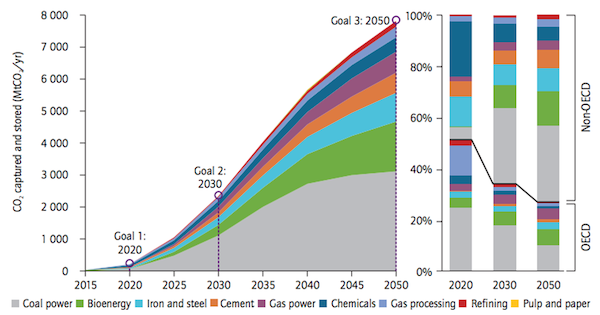
The Intergovernmental Panel On Climate Change admitted that the capture rates needed consistent with 2C warming target required a “remarkable” rate of increase. As of 2022, there were around 35 commercial CCS facilities allied to industrial processes, fuel transformation and power generation, with a total annual capture capacity of 45 million tons of carbon dioxide and around 300 projects under development.
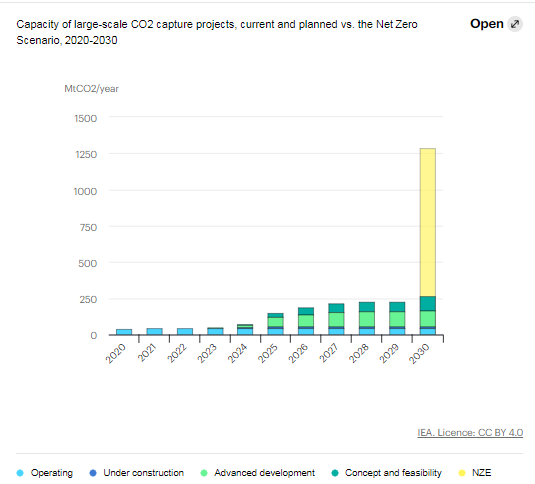
The required CCS expansion also ignores some important considerations:
- The carbon dioxide capture necessary grows rapidly if emissions are not reduced.
- The energy overhead of CCS facilities, that is the power used to capture carbon, compress it and injecting it underground, is significant.
Vaclav Smil highlighted the challenge: "… [in] order to sequester just a fifth of current carbon dioxide emissions we would have to create an entirely new worldwide absorption-gathering-compression-transportation-storage industry whose annual throughput would have to be about 70 percent larger than the annual volume now handled by the global crude oil industry, whose immense infrastructure of wells, pipelines, compressor stations and storage took generations to build.” Geologist Andy Skruse identified the practical difficulty directly: “We’d have to finish one new facility every working day for the next 70 years.”
The problems is magnified by the difficulties experienced in CCS projects. Based on several project attributes such as cost, technological readiness, credibility of revenues, policy incentives, regulatory complexity and public opposition, more than 80 percent of CCS projects have failed.
The high cost of CCS both in terms of plant and operating costs remains a barrier to adoption. A large scale CCS plant, allied to a power generator or heavy industrial plant, costs billions of dollars. DAC plants are also expensive with one designed to capture 1 megaton of carbon dioxide a year costing upwards of $2 billion. To date, CCS trials for coal-fired plants have generally proved economically unviable in most countries due to the capital cost and energy penalty.
The cost of removing carbon dioxide is currently assumed to be around $600 per ton, with a wide dispersion of $100-1,000. Without substantial reductions to the lower end of that range, techno-mechanical CCS is likely to remain uneconomic. The assumption is that higher volumes, learning experience and improvements in technology including scientific breakthrough will lower costs. However, the extent and timing are unknowable.
The value of the captured carbon is currently uncertain, beyond the externalities of reducing emissions. CCS activity focused on sequestration without any compensating use makes the economics unattractive. This has focused attention on the use of the carbon dioxide. The most prevalent current application is in oil and gas production where gas is injected to maintain reservoir pressure. The economics are viable while the fields are operative and is affected by revenue from enhanced oil recovery which is affected by volatile oil prices. Applications such as beverages or building materials are either insufficient, expensive or technologically young.
One way to create an economic incentive is through carbon taxes set at a level which would make CCS viable. The tax would have to be set at a level above the current price of $40-80 per ton of carbon dioxide. The required carbon price would have to be at least $120 combined with cross border carbon tariffs, such as that proposed by the European Union, to make CCS viable. This assumes large cost reductions through efficiencies and economies of scale and scope. The alternative is subsidies for CCS which are now available in a number of countries. The carbon tax or subsidies would eventually have to be paid by energy consumers.
The major attraction of CCS for policymakers and the public is that it superficially reduces the need for changes in energy consumption and lifestyles. It also has the advantage that it can be retro-fitted to existing industrial plants. However, it is uncertain as to whether it is feasible or can be done in a cost effective and energy efficient manner. Opponents also argue that CCS could indirectly legitimise the continued use of fossil fuels and undermines commitments on emission reduction.
The former UK chief scientist David King worryingly argued that CCS is essential to keep temperature rises below 1.5-2C and is “the only hope for mankind”.
Hot and Hotter!
Based on the current state of science, technology, policy development and implementation, the probability of meeting emissions targets is doubtful. This means that global temperature rises will, in all probability, exceed the recommended levels, most likely substantially and earlier than projected. The consequent changes in planetary geo-physics and meteorology will be substantial.
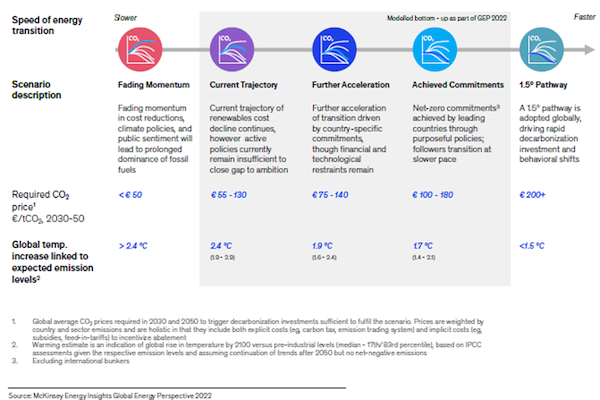
It seems that world continues to face the choice once articulated by Woody Allen: “More than any other time in history, mankind faces a crossroads. One path leads to despair and utter hopelessness. The other, to total extinction. Let us pray we have the wisdom to choose correctly.”
© 2023 Satyajit Das All Rights Reserved
A version of this piece was published in the New Indian Express.


That wasn’t “choose comedy” ?
“The major attraction of CCS for policymakers and the public is that it superficially reduces the need for changes in energy consumption and lifestyles.” That’s a very polite way of saying “do nothing”. I agree! It also offers a new federal cash spigot to be directed at their rain-making friends. I’m skeptical that CCS will be (or can be) developed quickly enough to have any effect on our existential timeline whatsoever.
Mr. Das’s linear thinking fossil fuel diatribe misses the transition to renewables that is moving up the S curve of change. We are at the point of Henry Ford in the transition from horses to petrol powered cars of a hundred years ago. Coal is being replaced by renewables which now produce more electricity in the US than coal.
Yves favorite fossil fuel website carried a recent article about how solar and wind are saving Texan’s oil soaked butts:
“Wind and solar power are ‘bailing out’ Texas amid record heat and energy demand,” read a recent CNN headline. Strong performance and high production rates from both wind and solar have been critical to meeting demand at peak hours. When demand peaked last Sunday, wind and solar contributed 26 gigawatts of energy to the grid, or nearly 40% of the total energy required. “Texas is, by rhetoric, anti-renewables. But frankly, renewables are bailing us out,” Michael Webber, an energy expert at the University of Texas was quoted by CNN. “They’re rocking. That really spares us a lot of heartaches and a lot of money.”
https://oilprice.com/Alternative-Energy/Renewable-Energy/Texas-Turns-To-Renewables-As-Electricity-Demand-Soars-To-Record-Highs.html
The term “renewable” is very misleading. Neither solar nor wind energy are renewable. Both impact ecosystems very negatively. Just as hydro power does. The world needs to sharply reduce its energy use. Regardless of its source. Texas wasn’t bailed out by renewables. It was going to muddle through regardless. Some time in the future there may be no muddling through.
You claim that the transition to renewables is moving up the S-curve of change, approaching a point of innovation and change comparable with the moment of Henry Ford’s fabled introduction of petrol powered cars to the masses. However, I am not sure how your example of Texas using wind and solar power to meet “nearly 40% of the total energy required when demand peaked last Sunday” — substantiates your claim. I would guess that Sunday’s demand peaked during the daylight hours. I would also guess that Sunday was probably a bright sunny day in Texas. I would also guess that most power demand in Texas on a hot Sunday is demand for electric power to run the air conditioning. If I am near right about my guesses, I guess your example fits near best case conditions for producing and using wind and especially solar power. I hope the thought that went into your comment is not your best effort at lateral thinking.
I am not sure how you might characterize Mr. Das’s post as a diatribe. If it is a diatribe, it must be one of the most gentle diatribes. I would categorize Mr. Das’s post as a review of current efforts and proposals for reaching “carbon neutrality by the middle of the 21st century to limit global warming to below 2C, preferably 1.5C compared to pre-industrial levels.” The inventory of current efforts and proposals Mr. Das elaborates, and an accounting of their impacts versus their claims, provides a diatribe worthy of the name ample targets for scathing lampoon and harsh criticisms. In this case, pointing out something so plain as that the Emperor is wearing no clothes is quite unnecessary.
The use of the term diatribe was because I didn’t want to call him a fossil fuel lackey because his problem is the linear thinking of bankers and economists. See number 7 for the impact of the s curve.
So much is happening on the renewable and EV front that never makes it into links. Yves uses Oilprice and they had a good renewable example and is not the only major solar example.
Many things are occurring:
1. Wind and solar generate more electricity than coal and coal will be almost gone by 2030, even in Australia.
2. Solar has dropped massively and is now the cheapest resource.
Twenty years ago, our renewable RFP had a solar price of $185/MWh and now it is in the low $20/MWh. Also, it has near zero marginal cost for a 25-30 year life cycle.
3. Mr. Das is correct about carbon capture being a boondoggle. Hydrogen is another fossil fool attempt to keep their world going even though the efficiency is only 30% from source to load. Toyota is pushing this heavily because they can’t make electric cars that sell. 2% of their car sales a real EVs and the want to keep making Priuses with an ice engine.
4. Currently, 12% of new cars worldwide are EVs (not plugins) and that percentage is growing rapidly. Norway is 80% new EV cars. At the end of this year, a number of legacy car manufacturers may go broke because they don’t sell enough EVs and can’t meet the largest car market’s (China) pollution requirements that starts in January for new cars.
5. Peaking power plants (a jet engine bolted to the ground driving a generator) are being replaced by batteries with almost instantaneous startup and usually only need to run for a short period of time. Calpine wanted to replace a relatively new peaker last year because they were losing money. CAISO wanted them to keep it for another year or so to be conservative for the grid.
6. New battery chemistries will come on line in the near future that will change things. Sodium ion batteries are being put in cars in China by BYD and others. As production and costs drop, they will be used by cars and stationary uses because they are cheaper than lithium. Your tax dollars at PNNL have developed a flow battery (stationary storage) from starch! that will hold a charge for months and years. The production process still needs to be developed for mass production. Also, NASA has a solid state battery with three times the energy density of current batteries and can be used in airliners in the future.
7. A good overview of the future of renewables is by the Rocky Mountain Institute showing all these changes. To see all the graphs and data you need to download a pdf but the general items are in the main document.
https://www.utilitydive.com/news/global-renewables-growth-rmi-iea-net-zero/687789/
https://rmi.org/press-release/renewable-energy-deployment-puts-global-power-system-on-track-for-ambitious-net-zero-pathway/
However, RMI’s report said that many forecasters – IEA included – anticipated linear growth for solar and did not predict its exponential capacity growth.
“For many years, the IEA forecast linear supply growth of solar under its business-as-usual scenarios, even as solar supply continued to rise exponentially. But the IEA was not alone — even BNEF has been surprised by the speed of deployment of solar,” RMI said.
I do not know what Mr. Das favors. I think your notion that he might be be a fossil fuel lackey is unfounded. His posts examine energy technologies and the claims made for them in light of the data. You seem to believe this is some form of linear thinking. I am familiar with the idea of linear thinking versus lateral thinking but I do not see how what amounts to an accounting of claims versus data fits into either category. Usually the idea of linear thinking versus lateral thinking shows up in discussions about problem solving and creativity. Bankers and economists can think both linearly and laterally. I think many of the ideas of Neoliberal economics represent considerable lateral thinking to the point where they seem alien to me.
Your seven points make claims and tender data contrary to what I have read. Coal will be almost gone by 2030?
“…legacy car manufacturers may go broke because they don’t sell enough EVs and can’t meet the largest car market’s (China) pollution requirements that starts in January for new cars.” I think legacy car makers have been in a downward spiral for years because they do not make cars most people can afford or really want to buy — whether electric, hybrid, gasoline, or diesel powered.
I have been reading about promising new battery technologies for the last twenty years — almost as long as I have read of promising results in efforts to harness fusion power for something other than a bomb. The S-curve for technology has become a cliche claim by proponents of all sorts of technologies. It usually accompanies stunning claims of disruptive innovation leading to exponential growth. Promises … promises.
Your goto source for renewable energy the Rocky Mountain Institute, included this near the bottom of the page you referenced:
“…Jeff Bezos’ $10 billion commitment to fund scientists, activists, NGOs, and other actors who will drive climate and nature solutions. By allocating funds creatively, wisely, and boldly, the Bezos Earth Fund has the potential for transformative influence in this decisive decade. Funds will be fully allocated by 2030—the date the United Nations Sustainable Development Goals must be achieved.”
It may be fallacious to dismiss arguments because they originate from a questionable source — but Jeff Bezos?
Well, maybe the children in the southern hemisphere can finally achieve a better standard of living mining and assembling all these toxic batteries with short lifespans. I’m certain that all these materials will be extracted ethically and with an eye to present and future environmental concerns. Look how great the lithium mines are doing in this regard. It’s perfect, after it’s seven year life, the battery can be sailed across the ocean and disassembled by the children in China. It might even be better for their health than their current job of melting down last years I phone to recycle the metals there. While we’re at it, let’s build huge solar farms all over and ev charging stations everywhere. It’s all renewable for about thirty years, then we can find somewhere responsible to just bury it all.
Thank you for this series by Das. He’s by far my fave for his detail and his humor. So, carbon capture and sequestration it is. As I was reading this the thought intruded: Let’s make carbon the new currency. Literally, by solidifying it and minting it into coins. Kill two birds, air pollution and financial pollution. And at the same time making carbon coins very valuable, desirable and fungible – with an undeniable inherent value. Not like gold or our other currencies, all fiat and very useful but prone to inflation, but with an undeniable value clearly worth the exchange for another good. I can see it now, we’ll all be diving into hot tubs of poop if some joker tosses in a bucket of carbon coins. And should we ever need to put some carbon back into the atmosphere, it will be readily available. Because we never know when we are going to overshoot. So forget Bitcoin, it’s all smoke and mirrors, let’s do Carboncoin. I’m actually serious.
Diamonds are made of carbon.
The subtext here seems to be that capitalism is inherently incapable of solving the problem and must be replaced. That replacement (by ecosocialism or some other planned approach or a much smaller scale green anarchism) will require a violent revolution, which is probably a good thing as those tend to reduce CO2 emissions.
I would like to re-up some themes raised back on Part One of this series.
1. There Dobbs links to Surplus Energy Economics #254, which makes a nice, concise statement in terms of “two economies” well-known to NC readers: the real, material economy and the speculative and often imaginary “financial economy”. (Also good reading today at #259, on “greedflation”.)
2. Also in Comments to Part One, Henry Moon Pie lamented that “The American people have been kept from reality for decades”, and that, as remedy, “with the video tools available these days, a candidate [a la Ross Perot] could do four or five multimedia presentations of an hour each on the emerging multipolar world, the degradation of the Earth and economic growth, …”
I don’t think such videos need to be “an hour each”. They need to be more than a ten-second TV commercial spot. And of course they wouldn’t be allowed on TV anyway — they should be on the Internet. For example, Michael Hudson’s little explainer on Links the other day could be a game changer if it were done to more professional production standards.
But where are such “ads” from RFK or Marianne Williamson or Cornel West?
Just another estimate of where we’re headed temperature wise, the ENROADS simulator is currently estimating 3.3. degrees C by 2100 if Business As Usual continues. We’re at 1.3 now. Could be pretty exciting.
3.3 degrees C?
People who move from New York City to Florida subject themselves to an increase in average annual temperature of about 8 degrees C. Not particularly catastrophic.
(Temperature-wise, at least!)
A rise 3.3 degree global rise in temperatures means catastrophic sea level rise, record heat waves, droughts, floods, famines, wars, refugees on an epic scale, mass death. Don’t trivialize climate change in this ham-fisted way trollish way. Should I add an exclamation point for the faux cutesy, faux snark effect?
That’s not what the IPCC says. Where are you getting this stuff?
If cutesy and snark are what makes you happy, go for it. But you’d do better to look into the facts – on an issue that you obviously feel is important.
A lot of issues are important. Reread the post and the embedded links. Also, sea lioning is implicit bad faith.
What’s “implicit bad faith”? Is that, like, false consciousness?
And while we’re at it, “sea lioning”?
Guess I need to get out more.
” And while we’re at it, “sea lioning”? ”
I assume this is meant to be a question, namely . . . what is sea lioning?
Luckily, the Search Engineweb gives us an answer.
Here . . . https://en.wikipedia.org/wiki/Sealioning
and here . . . https://www.merriam-webster.com/words-at-play/sealioning-internet-trolling
and here, too . . . https://knowyourmeme.com/memes/sea-lioning
you’re welcome.
That is pretty much what the IPCC says. Starting at page 33.
Darius didn’t mention the extinctions.
Sir David King has moved on since his comments in 2014 about CCS. The acceleration of arctic heating and ice melt has led him to conclude that the Arctic must be refrozen. His refrain, and that of the Cambridge center for Climate repair that he established is encapsulated by the three R’s – reduce remove and repair – repair being the Arctic and other Eco systems on the verge of collapse.
The most promising interventions to freeze the Arctic are marine cloud brightening and stratospheric aerosol injection.
But most of the worlds Climate commissariat is against direct intervention, preferring to see humanity and much of the world’s life collapse.